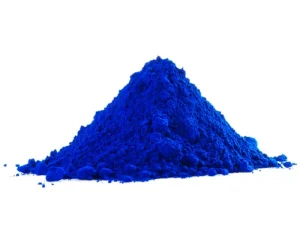
Methylene blue, also known as methylthioninium chloride, is a versatile compound with a wide range of applications in both medical and scientific fields. Originally developed as a dye, it has evolved into a crucial tool in various therapeutic and diagnostic contexts. Understanding its properties, uses, and mechanisms can shed light on why methylene blue is significant in contemporary medicine and research.
Medical Applications
One of the primary medical uses of methylene blue is in the treatment of methemoglobinemia, a rare blood disorder where hemoglobin is modified to methemoglobin, which cannot effectively release oxygen to body tissues. This condition can result from exposure to certain drugs or toxins. Methylene blue acts by reducing methemoglobin back to hemoglobin, thereby restoring the blood’s ability to transport oxygen. Administered intravenously, it can significantly decrease the half-life of methemoglobin from hours to mere minutes, making it an essential intervention in acute cases.
In addition to its role in treating methemoglobinemia, methylene blue has been employed as an antidote for cyanide poisoning. Cyanide interferes with cellular respiration by binding to cytochrome c oxidase in mitochondria. Methylene blue helps mitigate this effect by donating electrons to the electron transport chain, thus allowing cells to continue utilizing oxygen despite the presence of cyanide.
Methylene blue also finds applications in surgical settings. Surgeons use it as a dye to visualize anatomical structures during procedures, such as sentinel lymph node biopsies or identifying leaks in the urinary tract. By injecting methylene blue into tissues, surgeons can trace lymphatic drainage or highlight abnormal connections between tissues, enhancing the safety and efficacy of surgical interventions.
Laboratory Uses
In laboratory settings, methylene blue serves multiple purposes. It is commonly used as a stain for biological specimens, allowing researchers to visualize nucleic acids and other cellular components under a microscope. This staining capability is crucial for various assays and experiments, including cell viability tests where live cells take up the dye while dead cells remain unstained.
Additionally, methylene blue acts as a redox indicator in chemical analyses. Its color changes depending on its oxidation state—blue when oxidized and colorless when reduced—making it valuable for determining endpoints in redox titrations. This property not only aids in educational demonstrations but also assists chemists in conducting precise quantitative analyses.
Other Therapeutic Properties
Beyond its immediate medical applications, methylene blue has been investigated for its potential benefits in treating neurodegenerative disorders and psychiatric conditions. Although research is ongoing and not yet fully validated by regulatory bodies, preliminary studies suggest that methylene blue may have neuroprotective effects due to its ability to enhance mitochondrial function and reduce oxidative stress.
Moreover, methylene blue exhibits antioxidant properties that can protect cells from damage caused by free radicals. This characteristic opens avenues for exploring its use in conditions associated with oxidative stress, such as cardiovascular diseases and certain neurodegenerative disorders.
Safety and Considerations
While methylene blue is generally considered safe when used appropriately, there are important considerations regarding dosage and potential side effects. At high doses, it can paradoxically induce methemoglobinemia itself; thus, careful monitoring during administration is essential. Additionally, individuals with certain conditions or those taking specific medications should consult healthcare professionals before using methylene blue due to potential interactions.
Conclusion
Methylene blue exemplifies a compound with diverse applications across medicine and research. Its critical role in treating methemoglobinemia and cyanide poisoning highlights its importance as a therapeutic agent. Furthermore, its utility as a laboratory stain and redox indicator showcases its versatility beyond clinical settings. As research continues to uncover new therapeutic potentials for methylene blue, it remains a vital tool for healthcare professionals and scientists alike, bridging the gap between chemistry and clinical practice.
Need your own dietary supplement manufacturer? Extremely competitive rates. We produce it all. Talk to us.
Comments are closed